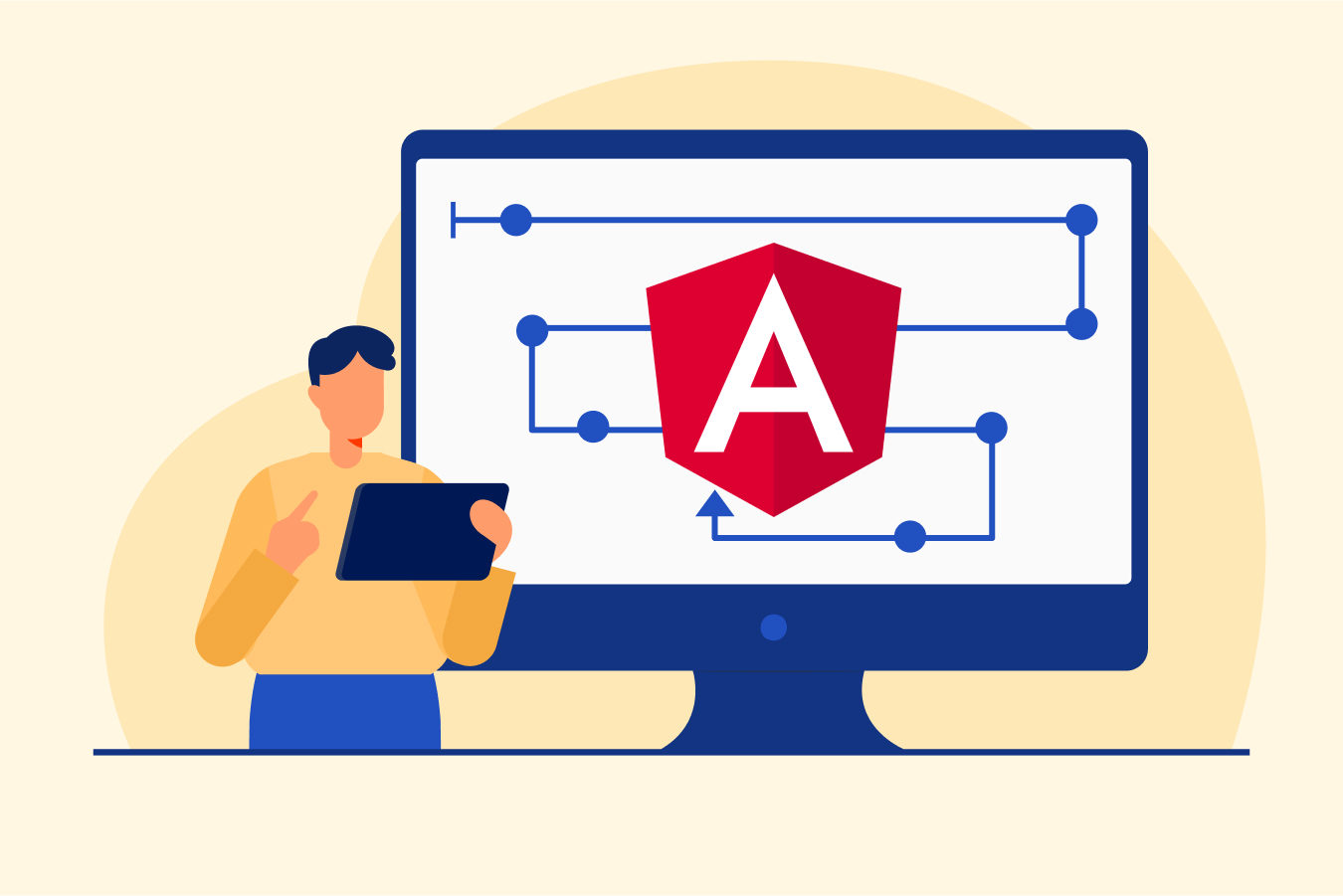DSA Roadmap to Follow in 2025
Data structures, which encompass organizational methods for data such as arrays, linked lists, and trees, form the bedrock of efficient data storage and retrieval. On the other hand, algorithms are step-by-step procedures designed to address problems efficiently.
In India, careers related to data structures and algorithms offer promising prospects. With a DSA roadmap, one can apply data structure knowledge in promising fields like software engineering, data analysis, and business analysis. The demand for specialists in data structures and algorithms is high in India, with salaries ranging from 4 to 15 lakhs per year, depending on experience and expertise.
DSA Roadmap: Learn Data Structure and Algorithms
DSA is a wide domain encompassing various essential fundamentals and concepts. Approaching the DSA learning journey with problem-solving skills and critical thinking abilities can make this journey fruitful and effective. Here’s a comprehensive DSA roadmap, guiding you through your learning journey. You can also enroll in a data science course with a placement to learn the fundamentals of data science while landing promising job opportunities.
1. Gain Proficiency in a Programming Language
Learning coding languages is crucial for mastering data structures and algorithms because it enables you to implement and test your knowledge effectively. Choosing the right language for learning DSA depends on your goals and preferences. Here are a few programming languages that you can consider:
- Java: Java is a versatile language suitable for software and web development, with a rich ecosystem of libraries and tools. It is a good choice for beginners due to its easier learning curve and extensive resources for learning DSA.
- Python: Python is known for its simplicity and readability, making it an excellent choice for beginners and those interested in web development, data analysis, and machine learning. It abstracts away low-level problems, allowing you to focus on fundamental aspects of DSA.
- C & C++: C and C++ are lower-level languages that provide direct control over memory management and system resources, making them ideal for implementing DSA concepts and competitive programming. C++ is often recommended for competitive programming due to its performance and extensive libraries, while C is suitable for learning DSA concepts from scratch.
2. Familiarize Yourself with Time and Space Complexities
Time complexity and space complexity are two important measures used to evaluate the efficiency of algorithms in data structures. Time complexity quantifies the amount of time taken by an algorithm to run as a function of the length of the input. Space complexity represents the amount of memory space needed by the algorithm in its life cycle.
These measures are essential for comparing different algorithms and choosing the most efficient one for a given problem. Ensure to cover these three major concepts of time and space complexity in your data structure roadmap:
- Big O Notation: Big O Notation mathematically describes the worst-case time complexity of an algorithm. It uses O(f(n)) to represent the upper bound, where f(n) signifies the number of operations performed as the input size increases.
- Omega Notation: Omega Notation expresses the best-case time complexity of an algorithm. It is denoted as Ω(f(n)) and indicates the lower bound, where f(n) represents the number of operations performed as the input size increases.
- Theta Notation: Theta Notation represents the exact time complexity of an algorithm, indicating that its time complexity is neither better nor worse than a constant factor of f(n) within a constant factor. It is denoted as Θ(f(n)), where f(n) signifies the number of operations performed as the input size increases.
These notations are used to analyze the complexity of algorithms, providing a standardized way to compare the efficiency of different algorithms in terms of their worst-case performance.
3. Learn Basic Fundamentals of Data Structures
Knowledge about the basic functionality and types of data structures enables you to utilize them effectively. Furthermore, it assists you in structuring the data based on your requirements easily. Here are a few types of data structures that you must know in this DSA roadmap:
- Array: A group of similar elements located in consecutive memory areas, accessible through an index.
- String: A sequence of characters, often represented as an array of characters.
- Linked List: A linear data structure where each element holds a reference to the subsequent element, enabling dynamic memory allocation for efficient memory management.
- Tree Data Structures: A hierarchical data structure consisting of nodes connected by edges, with a single root node, and each node having zero or more child nodes. There are various types of tree data structures including binary trees, AVL trees, and B-trees.
- Graph Data Structure: A non-linear data structure consisting of nodes connected by edges, allowing for the representation of complex relationships between nodes.
- Stack: A data structure that follows the Last-In-First-Out (LIFO) principle, where elements are inserted and removed from the top.
- Queue: A data structure that operates on the First-In-First-Out (FIFO) principle, with elements inserted at the back and removed from the front. The different types of queues include double-ended queues, circular queues, and priority queues.
- HashTable, HashMap, and HashSet: A data structure that associates keys with values, enabling rapid lookups, insertions, and deletions of elements based on their keys.
4. Acquire Knowledge of Data Algorithms
In the realm of data science, algorithms serve as a set of instructions or rules that define a specific sequence of operations for a given problem. Key algorithms utilized in data science include sorting, searching, hashing, and graph algorithms. These algorithms play a crucial role in processing and analyzing data, with the primary objective being to uncover patterns and valuable insights from the data.
Here are some of the key data algorithms covered in this data structure and algorithms roadmap:
- Searching Algorithms: Techniques to find specific items in a collection efficiently.
- Sorting Algorithms: Methods to arrange elements in a specific order, crucial for data organization.
- Divide and Conquer Algorithms: To solve a problem effectively, first break it down into smaller, more manageable parts. Then, solve each part individually and combine to reach the final solution.
- Recursion: A programming technique where a function calls itself to solve smaller instances of the same problem.
- Backtracking Algorithm: An algorithmic technique that incrementally builds a solution by exploring all possible options and backtracking when reaching a dead-end.
- Dynamic Programming: To solve complex problems, a method involves dividing them into smaller, manageable subproblems. By solving each subproblem and storing the solutions, efficiency is increased.
5. Practice to Hone Your Skills
The last step in the DSA roadmap is putting your learnings and skills to the test. Once you have covered the theoretical part, move on to the practical part where you gain some experience. Experiential learning enables you to understand the concepts better and correlate them with real problems. By practicing a few data science self-projects, you can hone your skills, identify the weaker areas, and refine them to master the skills.
Conclusion
This data structure and algorithms roadmap equips you with all the essential steps you need to cover to excel in this domain. DSA plays a crucial role in data science, data analysis, and other fields by organizing, storing, and retrieving data efficiently. This boosts the process of data science and other data-related process. If you are interested in building a promising career in any of these fields, bookmark this blog and save this cheat sheet offering you an extensive DSA roadmap.
Additionally, you can enroll in a short-term data science course, join online communities, or attend webinars to network and learn with peers. These industry networks can further assist you during your job search. Also, check out our blog on the advantages and disadvantages of data structures to gain deeper insights into the skill.






